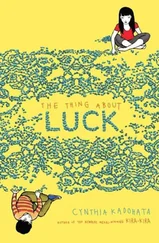My father’s term of derision for big-bellied men: “watermelon smugglers.”
Laurie and I stage monthly dieting competitions, though neither of us is overweight. “Want a second helping?” “I made some banana bread for you.” What’s going on here? We’re each saying: you’re beautiful; I, though, am wanting; I will do anything for love.
Fasting frees one from carnal needs and desires, prepares one for visions and trances. Moses fasted 40 days before receiving the Ten Commandments. Jesus fasted 40 days before his enlightenment. Medieval saints (especially women) fasted to demonstrate their purity and holiness, and if their fasting appeared to continue far beyond normal human bounds, it was proof of God’s grace. By controlling their breathing, nuns in ancient times were able to stop menstruating and limit their need for food.
Fasting is a constant for female saints. In the thirteenth century, Margaret of Cortona said, “I want to die of starvation to satiate the poor.” Thérèse of Lisieux died of tuberculosis in 1897, just short of her 25th birthday. As she lay dying, bleeding from her intestines and unable to keep down water, she was tormented by the thought of banquets. Gemma Galgani died in 1903—also of TB, also at 25. She dreamed of food; would it be all right, she asked her confessor, to ask Jesus to take away her sense of taste? Permission was granted. She arranged with Jesus that she should begin to expiate, through her own suffering, all the sins committed by priests. For the next 60 days she vomited whenever she tried to eat.
In 1859, an American doctor, William Stout Chipley, published an article describing a condition he called “sitophobia,” fear of food. In 1868, William Withey Gull, the English physician who was suspected of being Jack the Ripper, first mentioned anorexia nervosa; in 1873, he delivered a lecture on the disorder. The same year, a French doctor, Charles-Ernest Lasègue, published a long article on what he called “hysterical anorexia.” Lasègue described the following symptoms: menstruation ceases, thirst increases, the abdomen retracts and loses elasticity, constipation becomes obstinate, the skin is pale and dry, the pulse is quickened, the patient tires easily, and when she rises from resting often experiences vertigo—all of which are still associated with anorexia.
In the late nineteenth century, a tepid appetite was proof of a woman’s delicacy and elegance. A young lady who admitted to a hearty appetite would be said to “eat like a ploughboy” and would be the object of sneers and jests. Victorian women, even when they became mothers, were admonished never to demonstrate their hunger. If they did confess to hunger, they were expected to yearn only for light, sweet, delicate morsels and not for meat, which was thought to stimulate sexual desire. For a woman to enjoy a slab of roast beef was to suggest a baser nature that she was not supposed to acknowledge in herself.
In 2004, Hilary Mantel wrote, “Why do women still feel so hounded? The ideal body seems now attainable only by plastic surgery. The ideal woman has the earning powers of a chief executive, breasts like an inflatable doll, no hips at all, and the tidy, hairless labia of an unviolated 6-year-old. The world gets harder and harder. There’s no pleasing it. No wonder some girls want out. Anorexia itself seems like mad behaviour, but I don’t think it is madness. It is a way of shrinking back, of reserving, preserving the self, fighting free of sexual and emotional entanglements. It says, like Christ, noli me tangere. Touch me not and take yourself off. For a year or two, it may be a valid strategy; to be greensick, to be out of the game; to die just a little; to nourish the inner being while starving the outer being; to buy time. Most anorexics do recover, after all. Anorexia can be an accommodation, a strategy for survival.”
In Cymbeline, Imogen apparently dies when she’s about 15. Her brothers, Guiderius and Arviragus, stand over her grave and chant a dirge over what they think is her lifeless body inside her coffin: “Golden lads and girls all must / As chimneysweepers, come to dust.” Then Imogen opens her eyes and comes back to life.
Ye Olde Mind-Body Problem
In accordance with the Federal Cigarette Labeling and Advertising Act, all advertisements for tobacco products in the United States must include one of these four Surgeon General’s warning labels:
SURGEON GENERAL’S WARNING: Smoking Causes Lung Cancer, Heart Disease, Emphysema, and May Complicate Pregnancy.
SURGEON GENERAL’S WARNING: Quitting Smoking Now Greatly Reduces Serious Risks to Your Health.
SURGEON GENERAL’S WARNING: Cigarette Smoke Contains Carbon Monoxide.
SURGEON GENERAL’S WARNING: Smoking by Pregnant Women May Result in Fetal Injury, Premature Birth, and Low Birth Weight.
All four warnings must be used with equal frequency, but tobacco companies can choose when to use each warning. In compliance with the Federal Cigarette Labeling and Advertising Act, advertisements feature each of the four Surgeon General’s warnings with the same frequency—about 25 percent each. However, in the study sample of 52 ads in eighteen magazines, the warning to pregnant women occurs far more often in the ads in men’s magazines ( Sports Illustrated, Esquire, GQ ), 53 percent of the time, while this same warning occurs in only 20 percent of the ads in women’s magazines ( Mademoiselle, McCall’s, Ms., Vogue, Working Woman ).
The warning that cigarette smoke contains carbon monoxide occurs in 37 percent of the ads in women’s magazines but occurs in none of the ads in men’s magazines. The advertisements featuring the carbon monoxide warning usually feature youthful, carefree, and less serious-appearing women. Carbon monoxide is a poisonous gas that interferes with the body’s oxygen-carrying mechanisms; advertisers apparently assume that women, especially young women, are less apt than men to know this fact.
The magazine with the most cigarette advertisements, Mademoiselle, has a young, female audience. Eighty-eight percent of smokers start before age 20, and the only group that smokes more now than it did 20 years ago is adolescent girls.
Tobacco companies appear to manipulate the use of the Surgeon General’s warning to render them as ineffective as possible, mitigating the purpose of the warning by often using the warning they presume the reader is most likely to ignore.
Whenever I reread this précis for a poli sci paper Laurie wrote eons ago, I never fail to be moved by her belief/hope that the actions human beings take might be based to any degree whatsoever on rational thought. All the evidence points to the fact that they’re not (cf. anorexia). My father being, of course, the exception: he took up pipe smoking in the early ’50s (in photo-album pictures from that period he looks improbably dignified), but he gave it up immediately after realizing, during a tennis match, that it was cutting down on his wind.
In many insect species, when the female emerges from her sac as a mature life form, males immediately swarm around her, fighting desperately to mate with her. She mates, then dies after laying her eggs. Instead of the juvenile stages being preliminary to the fully formed adult life form, the adult life form exists only as the culmination of the juvenile life form, as a way for the cycle to continue.
In animals that produce all their offspring at once, like the salmon, most of the life span is spent getting ready for reproduction. The animal grows, stores energy, and prepares its gonads for one explosion. When the hormonal signal is given, resources are mobilized to maximize reproductive effort, even if this leaves the animal so damaged and depleted that it dies soon after. A salmon’s life span is significantly extended if it’s castrated before its gonads develop.
Читать дальше












